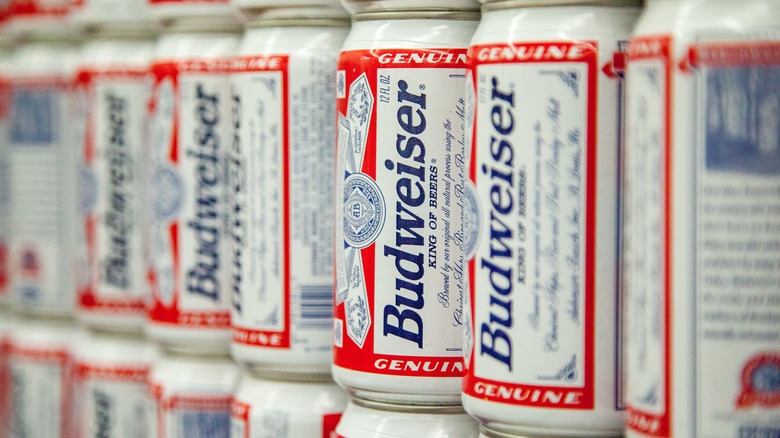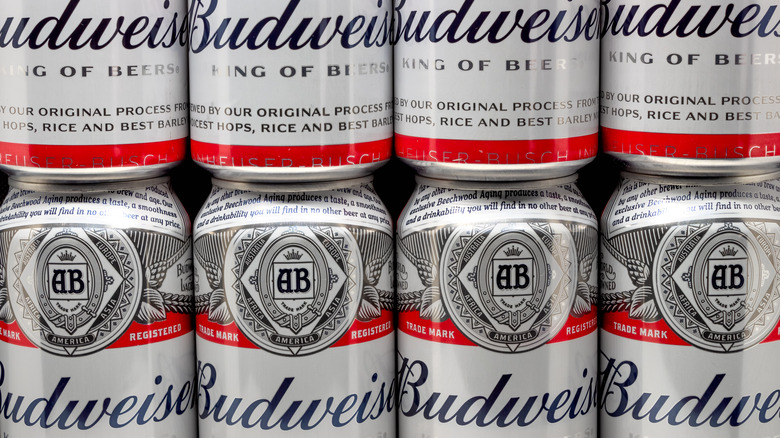This Is What The Budweiser Label Really Means
When German immigrant and brewery supplier Adolphus Busch teamed up with brewery owner Eberhard Anheuser, the partnership led to the creation of one of the world's most iconic drinks. Busch and Anheuser unveiled Budweiser beer in 1876, according to Britannica. While this lager has German roots, it has become quintessentially American. It's a light, easy-drinking, crisp, and refreshing beer without too many flavor and aroma bells and whistles, making it an accessible go-to for anyone who enjoys beer. That's why throughout the generations, Budweiser's label has become one of the most instantly recognizable in the beverage scene. Bud Light is now more popular than Budweiser (via VinePair), and Budweiser has also lost its throne to Coors Light and Miller Light (via Statista), as well as to craft beer (via Paste Magazine), but it remains a popular facet of Americana.
That red, white, and blue can label might indeed be instantly recognizable, but for such a simple brew, there's a lot happening aesthetically. Logos, crests, and tiny writing abound. So, what does it all mean? Helpfully, Cool Material has broken it all down, diagramming the famous Budweiser can.
Each part of the Budweiser can, explained
You know that elaborate banner stretching over the top of the can? Many of us might not take a moment to read it, but it's actually an interesting sort of high-quality beer mission statement.
"This is the famous Budweiser beer. We know of no brand produced by any other brewer which costs so much to brew and age. Our exclusive Beechwood Aging produces a taste, a smoothness and drinkability you will find in no other beer at any price." The banner also includes the Anheuser-Busch logo, with wheat and barley, says Cool Material.
Then there's the name, Budweiser, itself. It means "of the town Budweis," Cool Material explains. Budweis is south of Pilsen, the city in the Czech Republic that gave us the pilsner style. Underneath is Budweiser's "King of Beers" title. Beer from Budweis has been called "the beer of kings" since the 16th century because it was brewed in the Holy Roman Empire's imperial brewery, so Adolphus Busch flipped the distinction for fun.
The "Brewed by our original ..." writing under "King of Beers" is more information about Budweiser's quality, and the eagles in the corners are intended to drive home a sense of American patriotism. The more modern-looking "Genuine" label is the shortened update from older cans that read, "Only genuine as decreed by the courts."
Basically, Budweiser cans are like visually pleasing certificates authenticating the beer's quality. Budweiser started canning in 1936, and some variation of the label (plus limited edition change-ups, like celebrity collaborations and holiday looks) has been legendary ever since.

